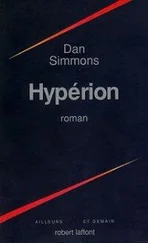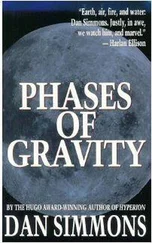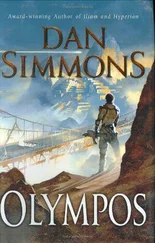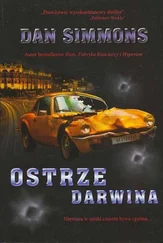The raven flies north just as it did a few minutes and 11,000 years earlier.
Paha Sapa sees that the Great Plains have been sliced into geometric parcels even more than in his lifetime. In this not-so-far-away future, at least one of the highways is a broad four lanes, two in each direction with a brown-grass median in between, similar in design to photographs he’s seen in newspapers of such a futuristic highway design in Germany that was first called the Kraftfahrtstraße in 1931 when the first four-lane section was completed between Cologne and Bonn but which Hitler is now—in Paha Sapa’s lifetime just ended—enthusiastically calling the Reichsautobahn , which Paha Sapa translated as something close to “Freeways of the Reich.” The German chancellor is putting his Depression-lashed men to work building more such autobahns all over Germany, and the New York Times has opined that not the least use of such a four-lane-highway system could be to move troops rapidly from border to border.
This new autobahn , stangely ringing the north part of the Black Hills within the very grooves of the ancient “Race Track” of Lakota lore, is filled with more automobile and truck traffic than Paha Sapa has ever seen or could have imagined. Even New York City in 1933 was not this insane with rushing vehicles. And the automobiles and trucks and indefinable shapes rushing east and west along the four long, curving lanes are painted a full spectrum of bright colors that catch the sunlight.
Having come of age in an America where railroads—the Iron Horse to Limps-a-Lot and the other Natural Free Human Beings a generation earlier than Paha Sapa’s—were invariably the fastest way to travel, Paha Sapa finds it hard to believe that these autobahns will soon bind America together. (Unless, Paha Sapa thinks with a stab of insight, there is soon to be another installment in the Great War not long after his death, with Germany winning this time and occupying the United States.)
But it’s not Germans who occupy the prairie beneath him, he acknowledges as his raven swoops lower, but cattle.
Cattle, those stupid, filthy things that evolved in Europe or Asia or somewhere and that are now filling the plains beyond any prairie’s capacity to provide for them. When Paha Sapa was working (badly, he knew, because he never learned to be a good cowboy) for rancher Donovan, he’d smile when he heard Donovan and the other old-timers in the area talking about the “grand old traditions” of ranching in the West. The oldest of those traditions were fifty to seventy-five years old.
But in this near-future, even if it’s only twenty or thirty or fifty years from this lovely early-September day in 1936 when Paha Sapa has died, he sees that the cattle have continued to do what cattle do: cropping the grass to its roots and overgrazing until the desert is returning to the North American plains; befouling with their excrement every stream and river they can reach while breaking down the streambeds and riverbeds with their odious weight; leaving their trails everywhere in the desertified dust that was once noble grasslands to the point that from the high altitude Paha Sapa’s raven flies, a water tank in a thousand empty acres of disappearing grass now looks like the hub of a wheel with a radius of five miles or more and tan-white spokes of cattle trails.
And to protect their sacred, stupid cattle, the wasichu ranchers (and their faithful Indian companions) have wiped out the few remaining predators—the last wolves, the last grizzly bears, the last mountain lions—and declared war on such other species as prairie dogs (the overriding myth is that cattle break their legs in the burrow holes) and even the lowly coyote. Paha Sapa imagines that he can see the sunlight glinting off the millions of brass cartridge casings ejected in the killing-on-sight of all these species whose crime was getting in the way of… cattle.
The air on this fifth day of September in its unnumbered future year is… very warm. It feels like late July or early August to Paha Sapa, embedded as he is in the raven’s exquisitely tuned senses. When they were high, he’d seen that there was no snow at all left on the summits of the Grand Tetons or the Rocky Mountains to the west and southwest, not even in that range that Paha Sapa visited as a boy which the Ute had alliterately named the Never No Summer Range.
There will be full, hot, snowless summer there now, even deep into autumn.
Swooping in a circle above the river, Paha Sapa can see that the partitioning of the plains does not stop with the new autobahn circling its four-lane-way north of the Black Hills from Rapid City or by the much busier (and paved!) web of state roads and county roads and fire roads and ranch driveways, or even with all the squares and rectangles and trapezoids of ranch land fenced off with barbed wire—and that is all the land as best he can see—but now the high- and green-grassed plains of his earlier vision and even of his childhood years have been carved into geometric shapes by the relentless overgrazing of the cattle.
On one side of the barbed-wire fences the raven swoops over, letting the wind carry it, the grass is low and unhealthy and missing its most beautiful varieties of botanic species, but on the other side of the wire, the more heavily grazed side, it is essentially dirt.
The hoofprints and cattle wallows and trails—bison never followed one another in single file, but stupid cattle invariably do—are bringing back the desert.
Paha Sapa once heard Doane Robinson talk to a group of physical scientists about the danger of desertification, but the threat seemed far away in the bring-in-more-cattle-and-people 1920s. Now he can see the results. Those parts of the Great Plains of the United States of America that didn’t blow away in the dust storms during the Great Depression have now been overgrazed, overtrod, overpaved, overpopulated, and overheated—for whatever reason the climate feels so warm—to the point that the deserts are returning. When his raven rises, Paha Sapa can see the once-blue river running brown with cattle shit and mud from its cattle- and erosion-collapsed bare banks.
The voice that is not his son’s but which sounds much like his son’s whispers to him without words.
In the old days, even in the thousands of years after the ancestors and others before the Ikče Wičaśa had wiped out all of the top predator and grazing species except for the bison, the great prairies of tall grass and short grass that spread from the Mississippi River all the way to the Rocky Mountains stayed healthy due to the interaction of natural forces.
Bison, unlike cattle, stampeded and wandered great distances in a way that spread the grass seeds of the now-missing healthy tall grasses. Their hooves, so unlike cattle hooves, actually helped plant the seeds. The buffalo grazed the grass in a way that did not chew down to the roots and kill the plants as cattle do, and they never grazed in one place for a long period of time. Their manure enriched the grasses that gave cover and a home to a thousand species no longer present.
The grasslands needed fire to replenish themselves. Lightning provided that replenishment, with no men—Indian or Fat Takers—to stop those fires, but even after the Natural Free Human Beings spread across the plains, they had the habit of annually lighting prairie fires themselves.
So did the Assiniboin and the River Crow, the Northern Arapaho and the Shoshone, the Blackfoot and Bloods and Plains Cree. So did the old, lost tribes whom first the Sioux and then the Fat Takers’ diseases had rubbed out—the Mandan and Hidatsa and Santee and Ponca and Oto and Arikara.
These peoples had burned the prairie regularly for their own reasons, sometimes for reasons lost to time, sometimes to flush game—and sometimes just for the fun of seeing the flame and destruction—but the fires had always helped to keep the varied prairie grasses and flowers and plants healthy and renewed.
Читать дальше












